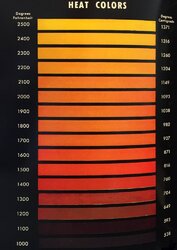I just got around to cleaning my chimney after a busy spring, it was done for the 1st time in December and had burned mostly non-stop from then through mid March. Out of the 24' of exposed class A (I can't build an enclosure around it at this time) I got about 1.5-2" of black, light crusty creosote in the bottom of a 5 gallon pail overall after cleaning with a soot eater, which seems to do just ok of a job. I did notice there is some small spots that it appears a glaze type creosote is forming that the soot eater won't even begin to remove. Is this excessive? The stove is a Blaze King Sirocco 30, I typically burn in as high as I can without overheating the cat, but do have to turn it back about half way with a full load of wood. Once every week or 2 I will leave it in bypass for a while and let it roll for an hour or so to get everything good and toasty. I got the blaze king for the low, long burn times, but that inevitably leads to creosote. I considered removing the catalyst and using a creosote remover log of some sort to help clean the chimney of that glaze, then a couple fires after to remove any residual before reinstalling it, is this acceptable for a cat stove? Anybody have any tips on burning methods to take advantage of the catalyst stove while reducing cresote?
Last edited:



